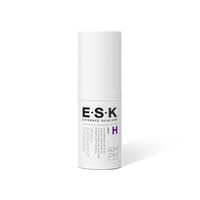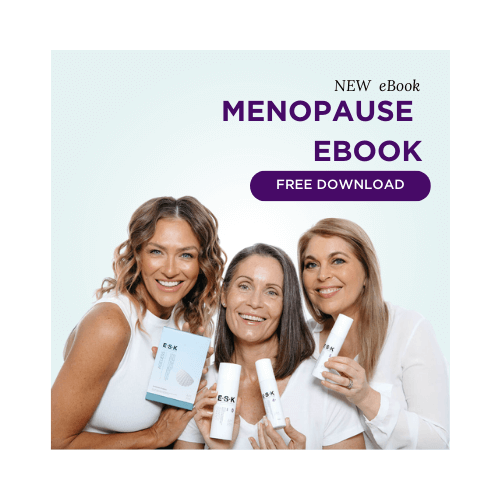
The ESK blog
“Maskne” Cutting Through The BS To The Evidence
20 July 2021
Dana Raffoul
‘Maskne’ definition:
[pronunciation: mask-knee]
Acne breakouts along the jaw, chin and cheeks as a result of frequent wear of a protective mask. Also known as one of the more popular (and irritating) skin concerns we’ve all faced this year. (The definition hasn’t quite made it to the Oxford dictionary yet – but you get the gist)
When we look back on 2020, and the things that make it a contender for the “Worst Year Of The 21st Century” award, “Maskne” won’t be anywhere near the top of that list. But it is one of the annoying things this year has thrown at us. The good news? There is something we can do about it!
SO WHAT DO WE KNOW ABOUT MASKNE?
There are plenty of experts who will tell you why we get maskne. And the reasons we have seen include “trapping dirt and bacteria”, “imbedded detergent in the mask” and “trapped makeup”. But being Evidence Skincare, we thought – let’s look at the evidence…
WHAT TENDS TO HAPPEN TO OUR SKIN WHEN WE WEAR MASKS?
When it comes to proper scientific studies, some of our first real insights came in 2006 when the SARS virus increased the need for wearing of masks like the N95 mask (which significantly impacted airflow), compared to surgical masks (commonly used in hospitals which easily allow expelled air to escape). And it found that 60% of people who regularly wear (restrictive) masks developed acne, 50% reported itchiness and 36% got rashes. In addition, mask wearing made wearers almost 3 times more likely to get a headache.
WHAT’S HAPPENING UNDERNEATH THE MASK?
The question of why we get maskne is one that we are only starting to piece together. According to a 2020 Chinese study we know that wearing masks increases skin pH, oil production and transepidermal water loss (water loss from skin to the environment). In addition, an increase in skin sensitivity and irritation was noted. The rate of increase was higher for masks that were closer fitting and which reduced airflow. Not unexpectedly it also found that temperature and humidity inside masks was higher.
…And that leads to….
According to a recent study, there is a strong relationship between Eczema and environmental humidity. And there is also a link between increasing humidity and increased risk of acne. So humidity inside your mask is a big part of the problem. The risk of acne is compounded by increased oil production and raised pH which impairs the skin barrier function.
Despite your skin’s oil production going into overdrive (plus the environment under the mask being humid) due to a compromised barrier function and resulting water loss from your skin, there is an increased risk of it getting dry.
Going back to the itchiness – a Polish study identified that the risk of developing an itch when wearing a mask was much more likely for mask wearers who had acne, or dermatitis (both conditions of compromised skin barrier) to develop and itch.
SO HOW BEST TO TREAT IT?
First thing – there is no evidence about how best to manage the specific skin conditions resulting directly from wearing a mask. The best we have is techniques for managing oily yet dry, sensitive, irritated, acne and Eczema prone skin in a humid environment…..So here are our suggestions based on those conditions:
1) Get to know your pH and try and use products with a pH of less than 6. Just another reason to use a soap free cleanser (soaps have a pH of between 8 and 10).
2) Use a gentle cleanser morning and night (Calming Cleanse).
3) A light Vitamin B3 based moisturiser (B Calm) will help improve the skin’s barrier function and reduce excess oil production.

B Calm
Calm sensitive, oily or acne prone skin with this light-weight vitamin B3 and Salicylic Acid moisturising cream that glides on like silk.
- Improve skin's barrier function
- Manage the skin's oil production
- Improve acne and rosacea symptoms.
New formula: We added 2% Salicylic Acid making it more light-weight, hydrating and more effective in managing acne and red and sensitive skin.
4) A gentle chemical exfoliator (Smooth Serum) should help improve the skin dryness and bring the skin pH down. But if things are at the stage where your skin is red and irritated, you may need to skip this (most chemical exfoliation ingredients can be a little unforgiving on damaged skin).

Smooth Serum
An Alpha Hydroxy Acid exfoliating serum for daily night use.
- Smoother skin
- Evens out skin texture
- Promotes skin cell turnover
5) Use a Vitamin A based cream at night – preferably one that has ingredients with evidence for managing acne (Ultimate A+). That will reduce excess oil production and tackle pesky spots if you have them. And even if you don’t, you will still be using the best evidence based anti-ageing ingredient available.

Ultimate A+
A Vitamin A (Retinal – 0.1%), B3 (Niacinamide – 4%) and AHA (Glycolic Acid – 2%) based night cream. Vitamin A is the ingredient with the strongest anti-ageing evidence and Retinal is the most effective and least irritating form of Vitamin A.
6) Salicylic Acid may be useful as a spot treatment for the pesky breakouts (Hydroxy Overnight Mask).

Hydroxy Overnight Mask
References
https://pubmed.ncbi.nlm.nih.gov/17026695/
https://pubmed.ncbi.nlm.nih.gov/32232837/
https://pubmed.ncbi.nlm.nih.gov/32406064/
https://pubmed.ncbi.nlm.nih.gov/32772259/
https://pubmed.ncbi.nlm.nih.gov/30238598/
https://www.ncbi.nlm.nih.gov/pmc/articles/PMC5986265/












